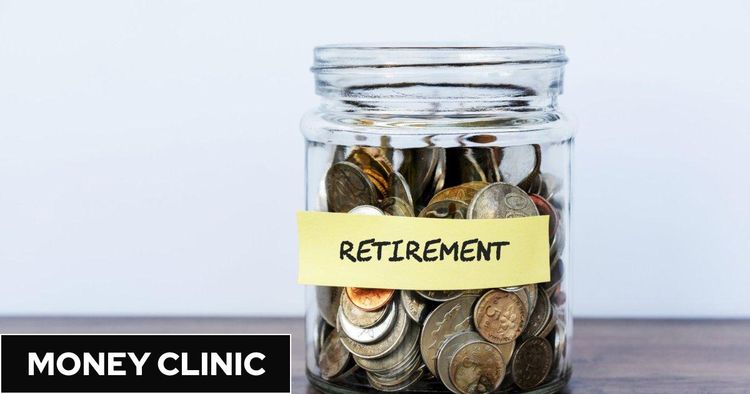Money Clinic: ‘I want to retire early at 61 and match my current income – how can I do it?’

In our regular feature, readers have the opportunity to send an email with any inquiry regarding retirement and pension savings. Our knowledgeable expert, Tom Selby, who is in charge of retirement policy at AJ Bell's investment platform, will provide the answers. There is no question too challenging for him. If you have a query for Tom, please send us an email at [email protected].

Query: At present, I possess a with-profits retirement fund managed by an insurance firm. I am an unmarried woman of 61, engaged in part-time employment. I aspire to cease working and access my pension by 2025.
I personally prefer drawdown, thus I have a query: is it possible for me to designate a specific monthly sum, similar to a regular paycheck? I bring up this question because I need to cover the duration of four years until I receive the state pension. It is important for me to maintain a level of income that aligns with what I currently earn in order to sustain my living.
The next inquiry I have is: will the insurance company handle the reduction payments, or will I have to move the fund to a different service provider? My ultimate question is: is there a more opportune moment during the financial year to initiate the process of withdrawing the funds?
A "with-profits" pension is basically a different type of personal pension where your money is pooled together with other individuals and invested in a "with-profits fund". The primary objective of these funds is typically to even out variations in investment returns, and there may be additional bonuses awarded at the end of the year or when your policy expires. The receipt of these bonuses is contingent upon how well the invested money performs and is ultimately up to the discretion of your pension provider.
Since with-profits funds are invested collectively, there might be a fee called a "market-value reduction" or MVR if you leave before your policy term ends. If you choose to switch to another provider, it is advisable to inquire with your current provider about the possibility of them applying an MVR.
In regards to your initial inquiry, "drawdown" refers to the method of withdrawing money from your pension when you need income. If you choose drawdown, your funds will stay invested, allowing you to customize your income according to your requirements. Consequently, you must be at ease with taking certain risks associated with investments and be prepared to actively manage your pension during retirement.
When you enter the drawdown phase, you can also get hold of a quarter of your funds without paying any taxes. The maximum amount of tax-free cash that most individuals can receive is limited to £268,275.
Another viable choice for generating retirement income instead of drawdown is purchasing an annuity. An annuity ensures a lifelong guaranteed income in exchange for your pension fund. Additionally, buying an annuity grants you the opportunity to withdraw 25 percent of your cash tax-free. While annuities offer enhanced stability and assurance compared to drawdown, they lack the same level of flexibility.
You also have the option to withdraw irregular, one-time amounts from your pension. A quarter of each sum will be tax-free, while the remaining three-quarters will be taxed as regular income. Additionally, you can combine and customize these choices for your retirement income.
If the pension providers offer the option of drawdown, you have the ability to choose the amount of money you want to receive on a monthly basis and decide when you would like to begin receiving these payments.
When determining your initial earnings, it is crucial to consider the viability of your withdrawal strategy because, in the end, you aim to ensure the longevity of your retirement funds.
As a general rule, professionals often suggest that a fit and healthy individual who is 65 years old can withdraw 3-4 percent of their initial pension fund value. This withdrawal amount should increase annually to keep up with inflation, ensuring that their pension does not run out. Nevertheless, the sustainability of this withdrawal rate will be influenced by several factors, such as your overall well-being and the success of your investment ventures.
It's important to remain involved and reassess your plan, preferably with the assistance of an authorized financial advisor, on a regular basis - at minimum, once per year. If your withdrawals appear unfeasible, you may have to contemplate reducing them, even temporarily. Similarly, if your investments demonstrate strong performance, you might have the opportunity to enhance your withdrawals.
As I previously stated, not all companies will provide drawdown, so make sure to inquire with your provider if it is available. If it is not, you have the option to switch to a different provider. However, ensure that there are no fees or significant losses of valuable guarantees involved before making this decision. Your current provider should be able to inform you if this applies to your situation.
Regarding your last inquiry, there isn't a specific period in which it is ideal to access your pension. Nonetheless, it is worth considering the impact of income tax. By distributing your withdrawals across various tax years and, whenever feasible, refraining from entering higher income tax brackets, you can potentially minimize your overall tax liability.
For instance, consider an individual who has already utilized their tax-free cash of 25 percent and intends to withdraw the remaining £75,000 through drawdown. If they withdraw the entire amount in 2023/24 without any additional sources of income, they will encounter an income tax charge of approximately £17,500.
However, if they decide to distribute their withdrawals evenly across three tax years (assuming the tax brackets remain unchanged), they will be liable for an annual income tax payment of slightly less than £2,500, which amounts to approximately £7,500 throughout the three-year period. This means that by simply spreading out their withdrawals over these three years, they have effectively slashed their income tax expense by £10,000.
Consequently, many individuals opt to tap into their pension funds during April, taking advantage of newly allotted tax exemptions.
Once you decide to access your pension through drawdown, the HMRC will probably deduct emergency taxes for the first month. If you receive a regular income, your tax code should update automatically. However, if you make a one-time withdrawal, you may need to complete one of three HMRC forms to reclaim your money.
For a more detailed understanding of how this process operates, as well as the steps to retrieve any excessive tax payments, you can refer to the article I penned on this topic at the beginning of this year.









































